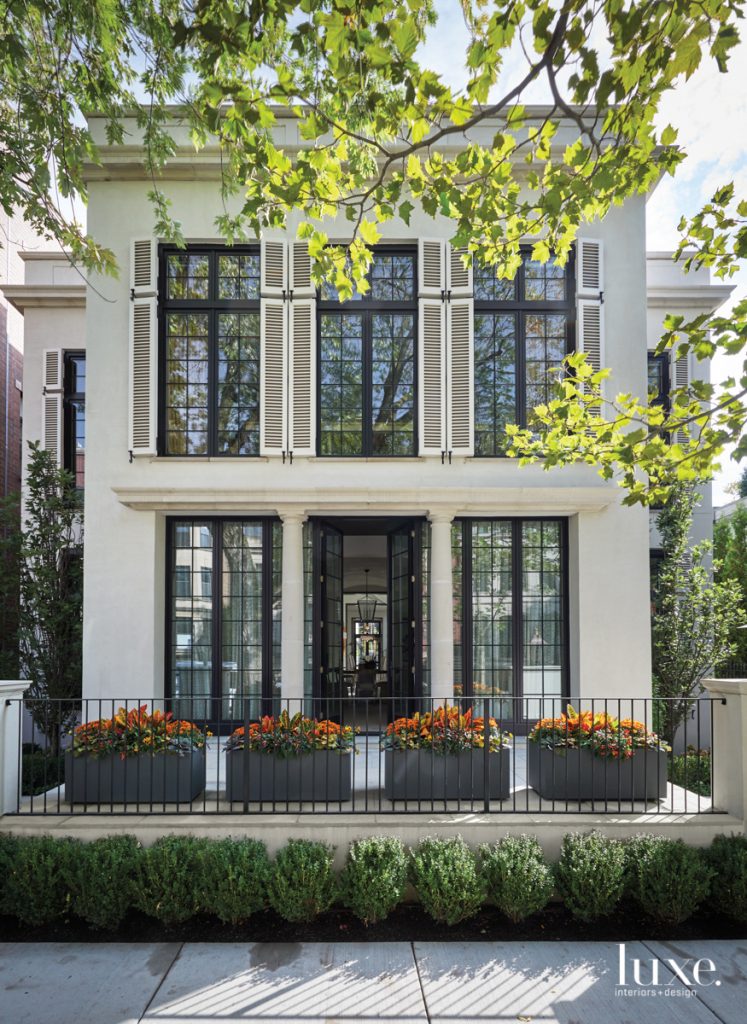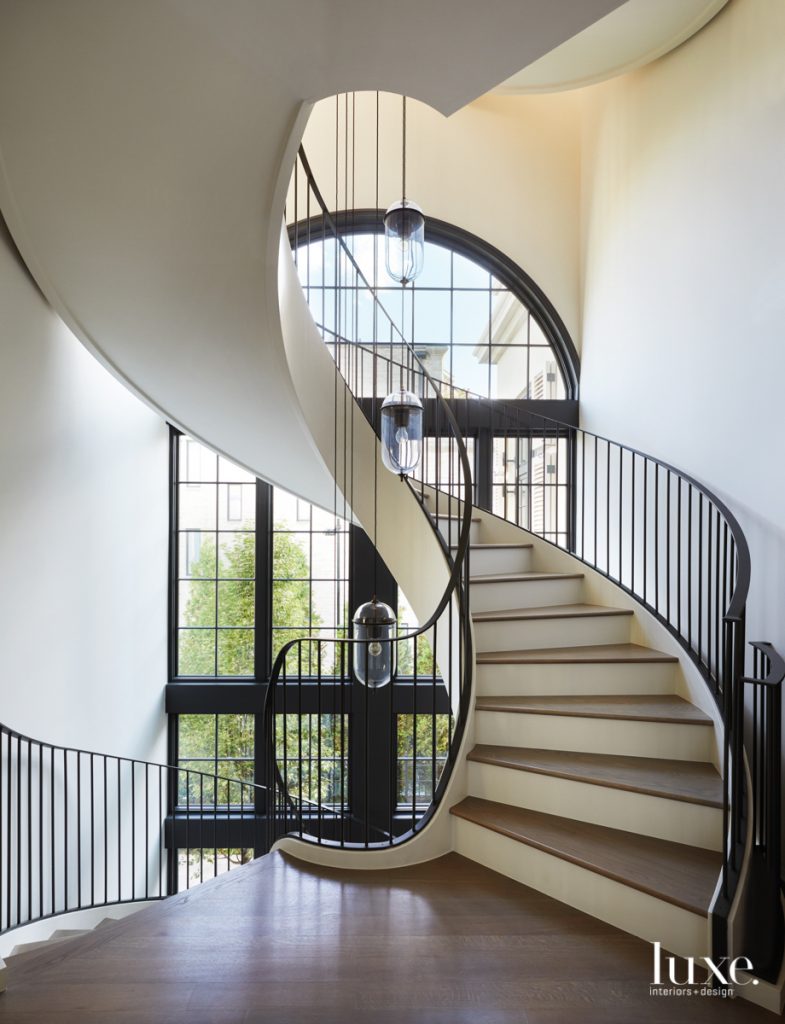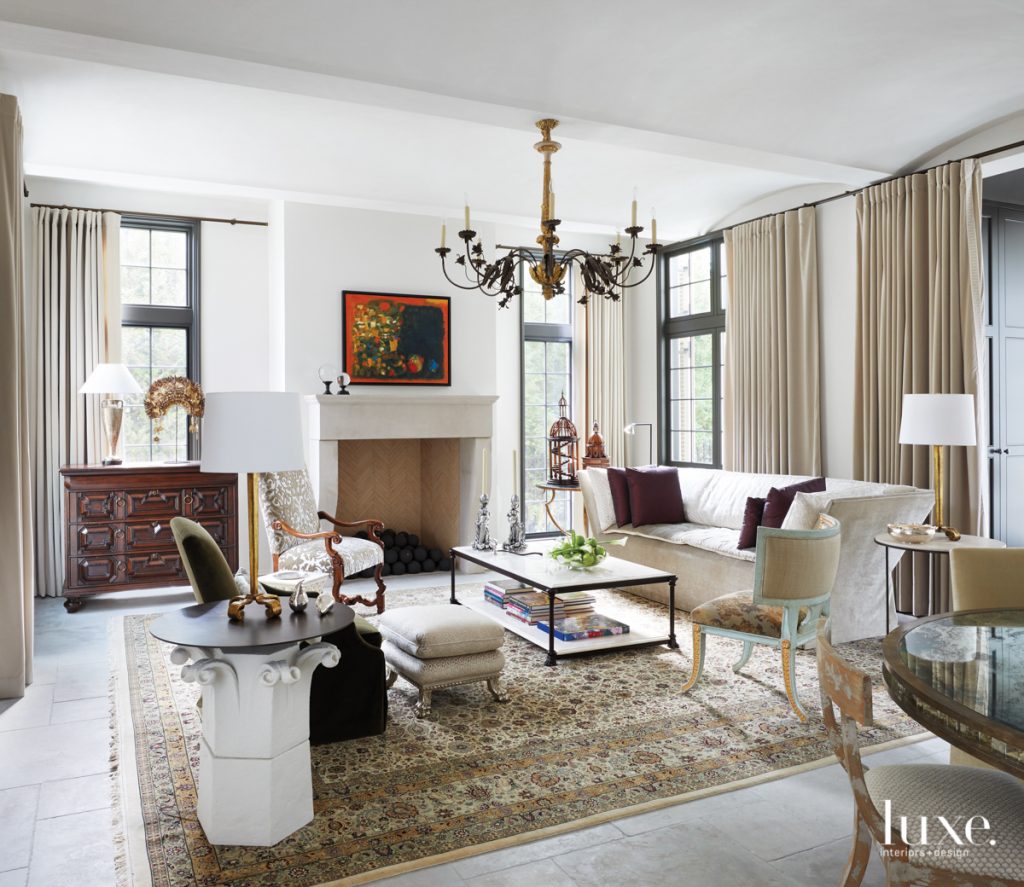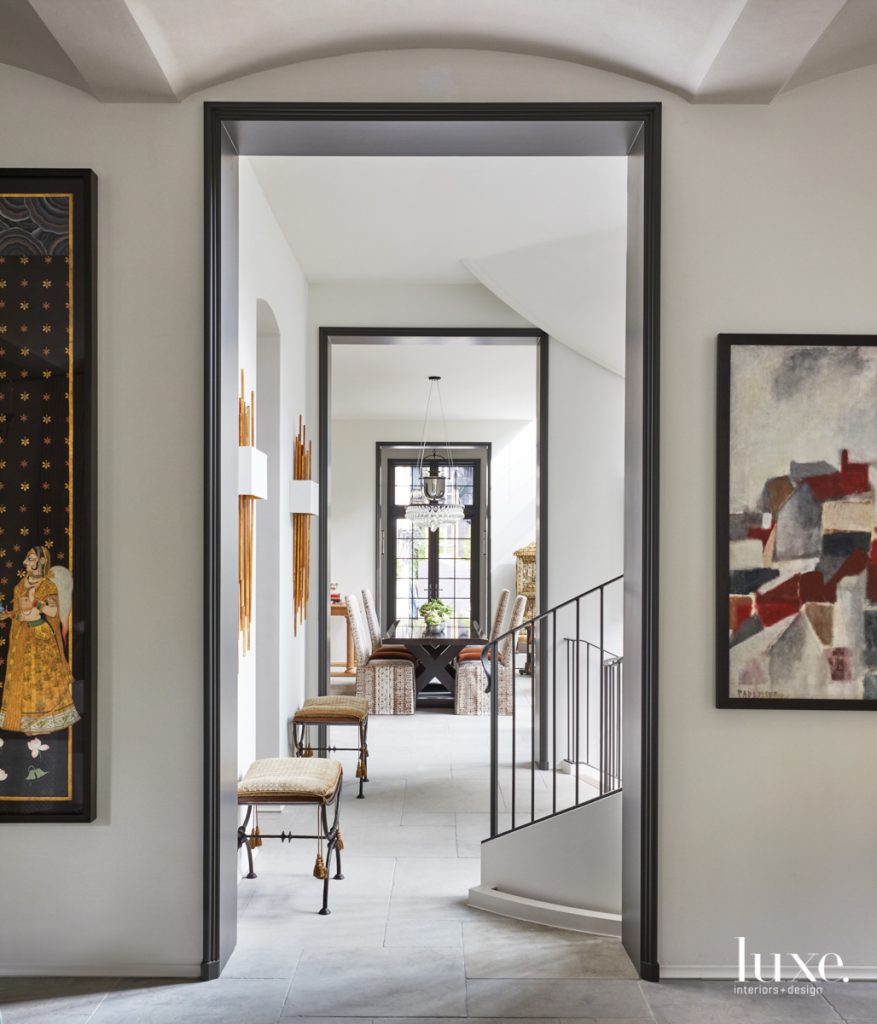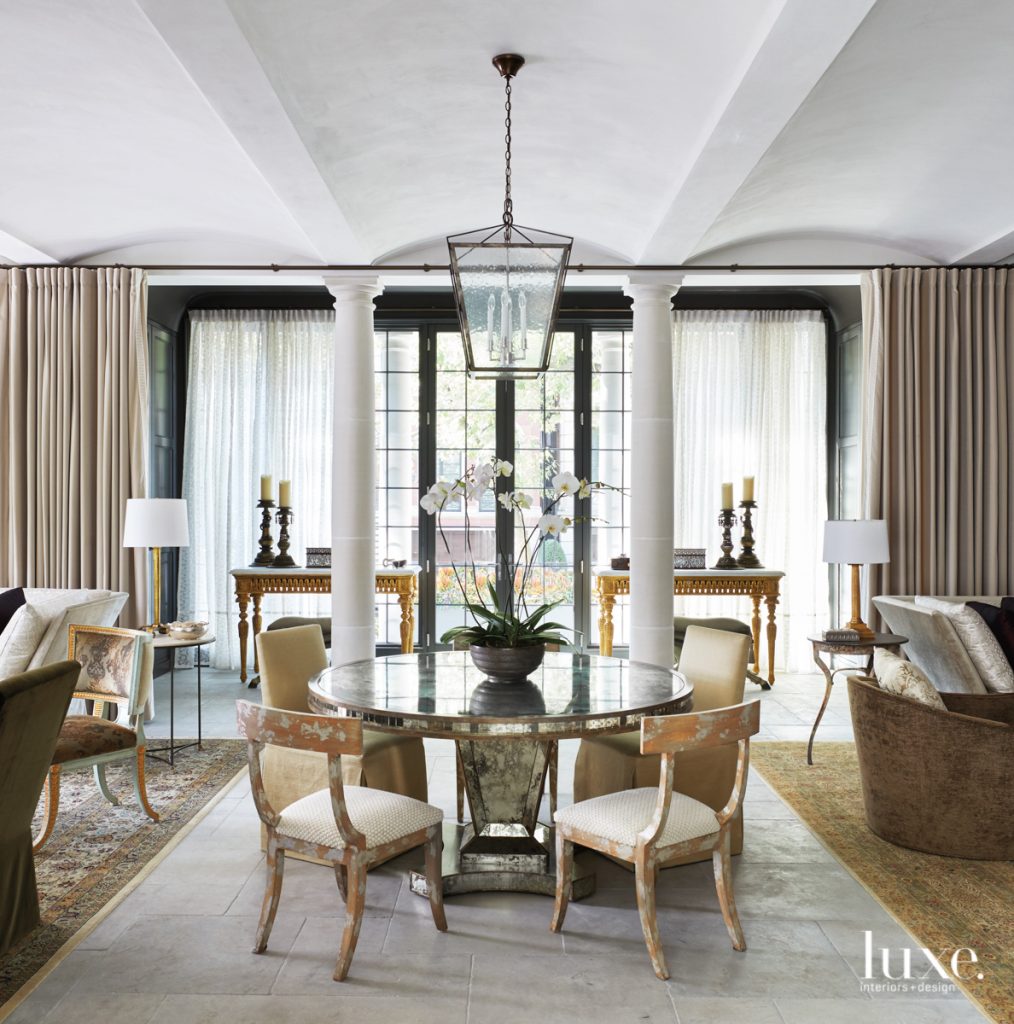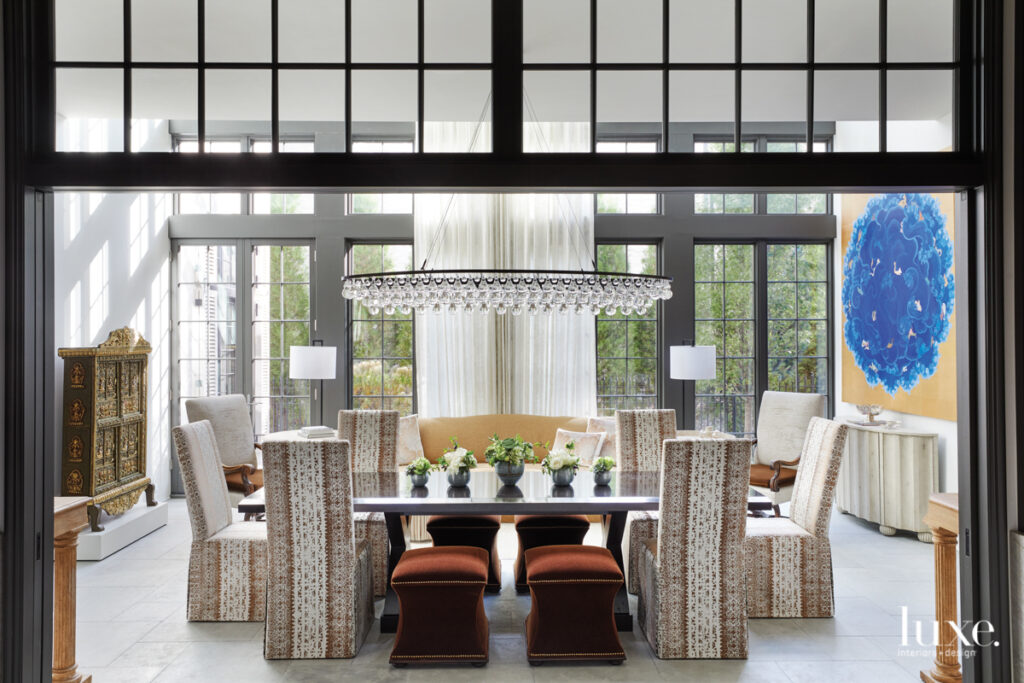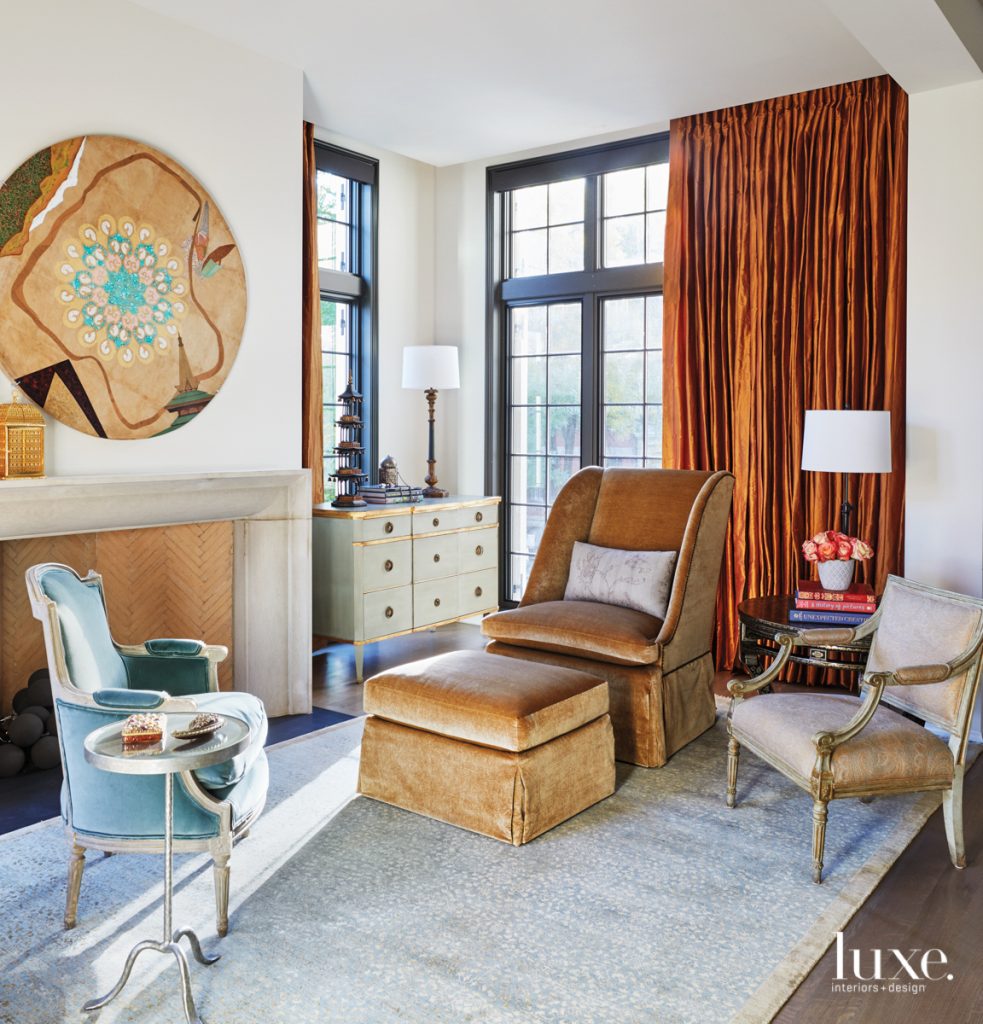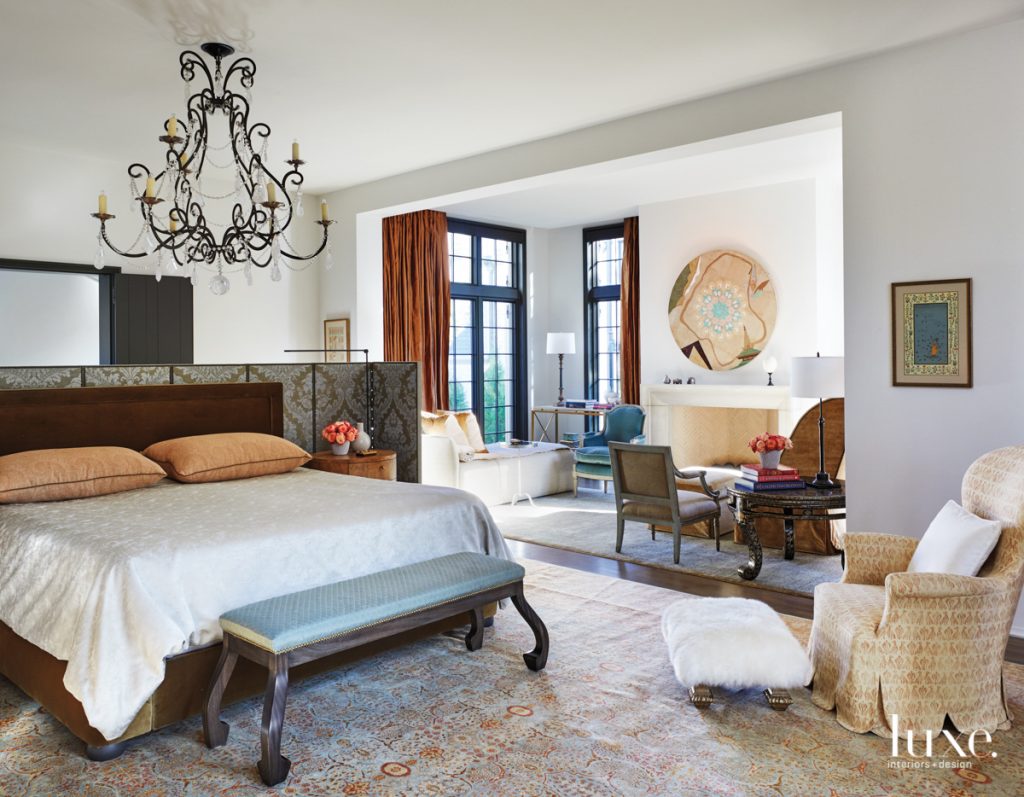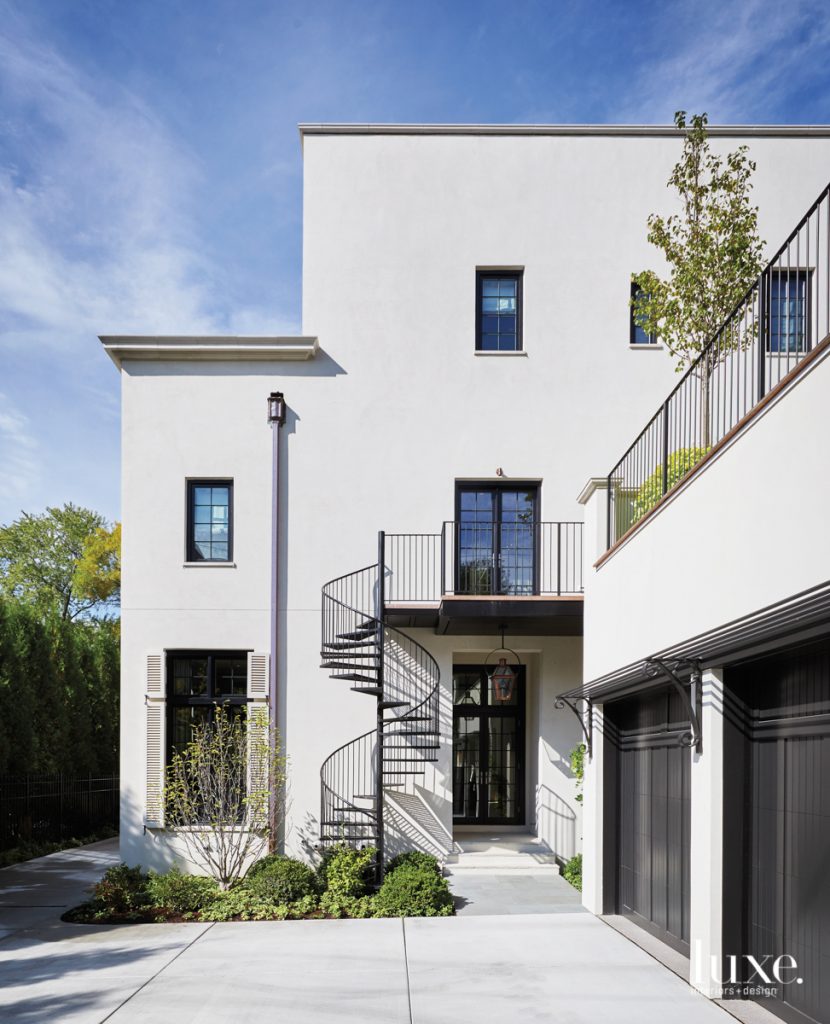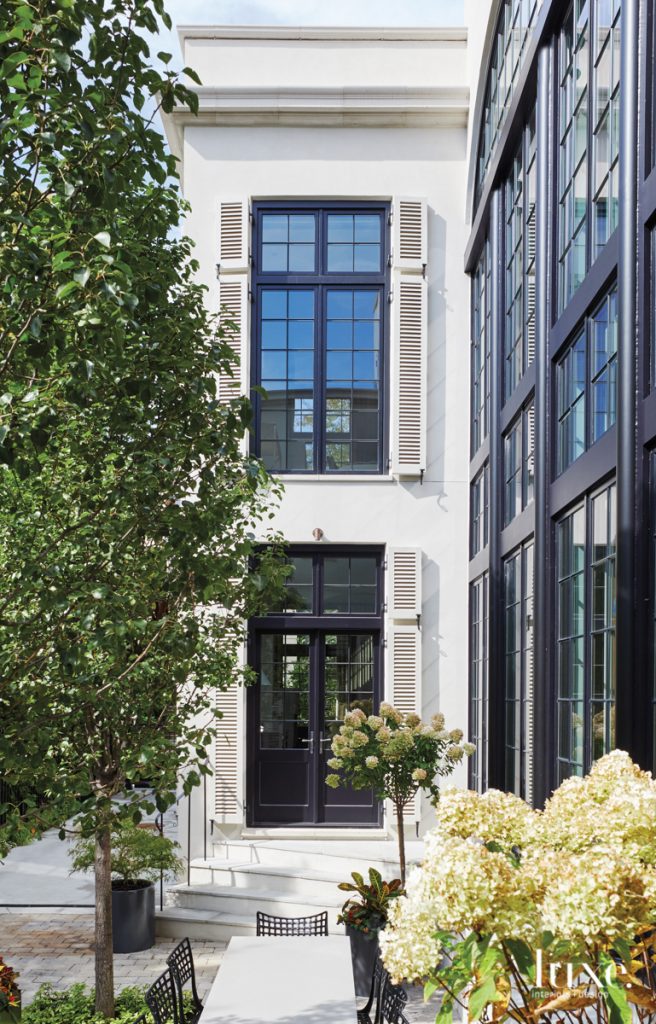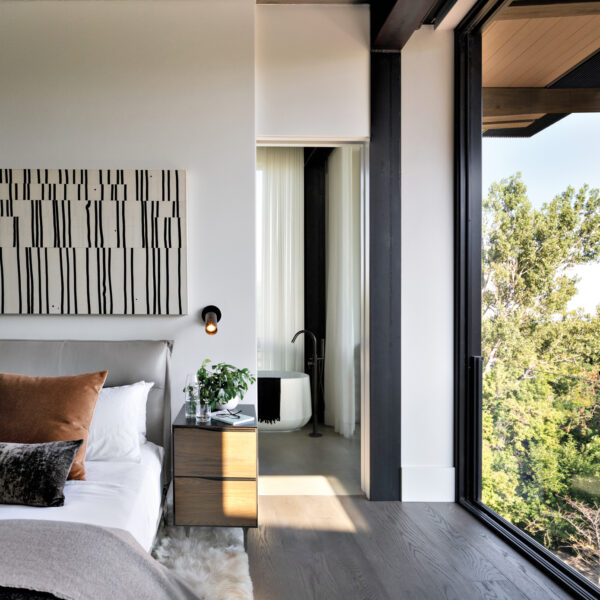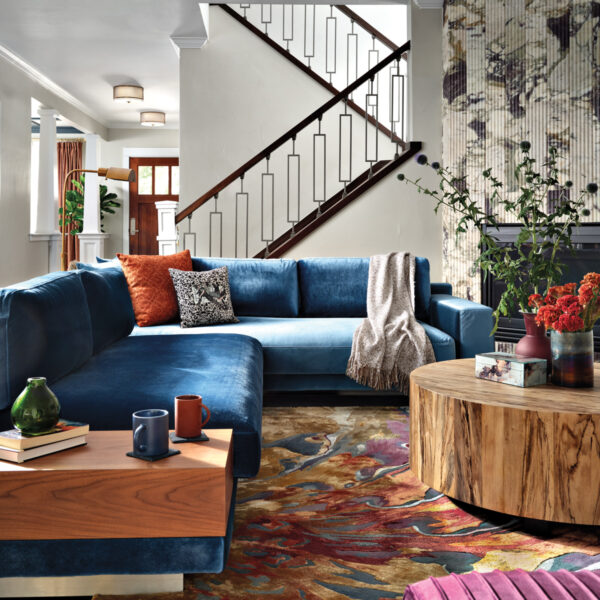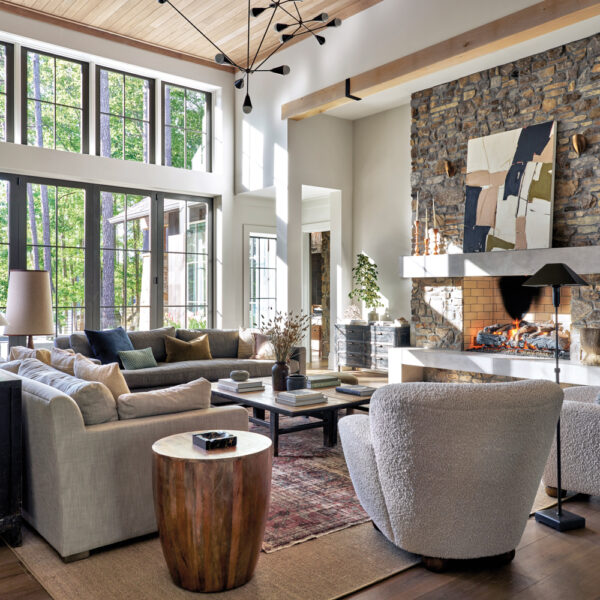The suburbs aren’t for everyone. That’s particularly true of a couple who already had their pleasant, in-bed-at-a-respectable-hour pace in the rearview mirror when they called the revered design firm McAlpine a second time. Fifteen years ago, architect Greg Tankersley created the clients’ first custom-built home. Together with Bobby McAlpine and general contractor John Morgan, he stewarded the process again when the conversation turned to a desirable street in Lincoln Park where some of Chicago’s most notable families have fashioned their ample architectural legacies with all the subtlety of a tiara. “We wanted to come up with something understated because we realized it was a loud cocktail party that we were invited to,” says Tankersley. “I’ve always thought the quietest person in the room has the most to say, so I wanted to design a home that was very elegant and could respect the street front and step back from it.”
The structure–a stucco, two-toned body with dramatic windows and a garage that’s out of view–was exactly the kind of quiet riot the neighborhood never saw coming. It’s a tailored, unconventional “little embassy” of a home with classic bona fides and big gestures rendered with ease. Take the bifold shutters, for example–a frequent feature on buildings in Paris and something Tankersley has always wanted to use. In an unexpected move by the architect, instead of black, they were painted the same neutral exterior shade. “I think anytime you do something grand you have to apologize for it,” he says. “You have to have great stature, then great humility.”
The interiors follow that mantra, courtesy of interior designers Ray Booth and John Anderson. The clients collect Indian and Asian art and are active patrons in the community–the husband sits on the board of trustees at The Art Institute of Chicago. But the space doesn’t indulge in the solemnity of Important Art. “I may have a chair in front of an antiquity or partially obscuring a painting, and I’ve had more serious collectors comment on that,” explains the wife. “I push back and say, ‘No, this is a house, and that is a really comfortable chair in a fabulously sunny spot that’s as important as the painting.’ So, it’s a way of incorporating the art into your life rather than being owned by the art.”
Consider the dining area. The luminous space features art and furniture arranged to convey an admirable nonchalance. “We believe that furnishings should not necessarily limit the function of any particular space,” says Booth. “It’s always guaranteed to be a dead room if there aren’t opportunities to lounge or interact, have a cocktail or enjoy a meal layered into these spaces.” The clients have an antique Nepalese cabinet, “a museum-quality piece that’s just stunning and jewel-encrusted, so we put that on a plinth to show it off,” notes Anderson. It’s beautiful but not attention-seeking, much like the two Japanese screens in the kitchen. Rare is the client who digs that idea, but there they are–illuminated by sleek picture lights and poised casually in front of cool marble slabs in a kitchen that makes the caterer flip.
The salon is a gracious space in the front of the house with barrel-vaulted ceilings, columns, fireplaces at each end and limestone floors–deliberately selected to expand the visual experience. In the wrong hands, the space could feel aloof. But the team’s plan was to give the clients a home they could live in fully, either alone or with guests. “It was a lesson in editing and context because these pieces already existed, so it was about how to use them to best service the greater aesthetic of the house,” says Booth. He and Anderson reinvigorated John Saladino sofas and Nancy Corzine seating–and just about every other piece–with new upholstery, arranging brilliant, layered spots for gathering. The effect is sophisticated but easy, with no risk of becoming a social outcast should one forget to use a coaster.
Upstairs, a serene seating area in the master suite took its cues from a beloved rug–the circular Praneet Soi work arrived later, perfectly in sync with the palette. A scaled upholstered screen ensconces the bed, which floats in the center of the room “This screen becomes a gathering device something like a wall; it reaches out its arms and kind of holds the bed and the nightstands and huddles everything close together, giving it a sense of focus in the room,” explains Booth.
The hand-painted commission was from an artist in Northern India that the wife personally sought out. “The screen is a very foreign concept in India; it’s not a traditional piece of furniture. I had to explain what it was,” she says. “Once he got it, he executed it perfectly.” And in a truly progressive act of marital accord, she kindly allowed her husband the larger closet, as his fashion habit surpasses her own. That’s not a surprise to Booth. “There was a graciousness and encouragement from the get-go,” he says of working with the couple. “We would go out to great meals with them and certainly we would talk about the house during the day, but it was kind of funny because whenever we got to dinner, it was like the house was not to be discussed…we were really getting to know each other. And that just speaks to the grace of this particular couple.”

